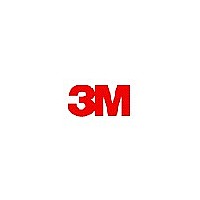3M7503 3M, 3M7503 Datasheet - Page 17

3M7503
Manufacturer Part Number
3M7503
Description
3M7503 HALF MASK (LARGE)
Manufacturer
3M
Datasheet
1.3M7502.pdf
(20 pages)
Specifications of 3M7503
Safety Category
CSA Standard Z180.1
Respirator Type
Valved
Face Mask Style
Half Mask
Lead Free Status / RoHS Status
na
Replacement components are available in a spare parts kit R-7530ES *(37080) or as individual
components.
3M™ Head Harness Assembly
1. Remove 3M™ 7581 valve cover/Head Harness Assembly by pulling away from faceseal. (Fig.
2. Replace 3M™ 7581 valve cover/Head Harness assembly by aligning parts and snapping
1. Remove 3M™ valve cover/Head Harness Assembly by pulling away from faceseal. (Fig. 17)
2. Remove 3M™ 7583 Exhalation Valve from valve seat by pulling each valve stem separately from
3. Replace 3M™ 7583 Exhalation Valve by inserting stems and pulling through from opposite side
4. Replace 3M™ 7581 valve cover/Head Harness Assembly.
Fig. 17
Cleaning
CAUTION: Cleaning with solvents may degrade some respirator components and reduce
respirator effectiveness. Inspect all respirator components before each use to ensure proper
operating conditions.
Cleaning is recommended after each use
1. Remove cartridges and/or filters.
2. Clean facepiece (excluding filters and cartridges), with 3M™ 504 *(07065) Respirator Wipes
(not to be used as the only method of cleaning) or by immersing in warm cleaning solution, water
temperature not to exceed 120˚ F, and scrub with soft brush until clean. Add neutral detergent if
necessary. Do not use cleaners containing lanolin or other oils.
3. Disinfect facepiece by soaking in a solution of quaternary ammonia disinfectant or sodium
hypochloride (1 oz. [30 ML] household bleach in 2 gallons [7.5 L] of water), or other disinfectant.
4. Rinse in fresh, warm water and air dry in non-contaminated atmosphere.
5. The cleaned respirator should be stored away from contaminated areas when not in use.
Replacement Instructions
17)
together. When properly engaged an audible snap should be heard.
3M™ Exhalation Valve
holes. (Fig. 18)
until they are both snapped in place. (Fig. 19 and 20)
17










